Everyone likes a good plate of fresh, piping hot fried rice – and I’m no different. I’ve had my fair share of the dish both at home and on my travels, and then it hit me. I’ve been able to get some form of the ubiquitous entree everywhere I went, from the busy beach resorts of Bali to the mountain villages high up Northern Thailand. So, that sparked my curiosity: just how many different kinds of fried rice are there? And, perhaps more controversially, who does it best?
China
Starting off this list in China, we have got a whopping four varieties to choose from: Hokkien, Cantonese, Szechuan, and Yangzhou fried rice.
Yangzhou Fried Rice
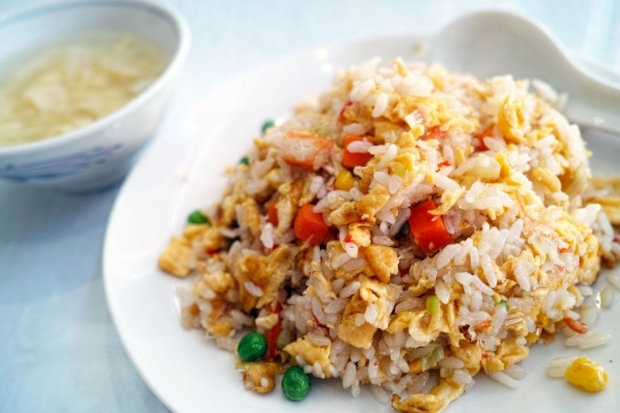
Image credit: Pxhere
Yangzhou fried rice is said to be the prototypical fried rice for Chinese takeaway menus all over the world. Originating from the Jiangsu Province in China all the way back in the Sui Dynasty (589 – 618 AD), this variant is defined by the generous helpings of both scrambled egg and shrimp. The other ingredients can vary from restaurant to restaurant, but one can usually expect barbequed pork, cooked chicken, and a flavourful smattering of chicken stock.
Hokkien Fried Rice
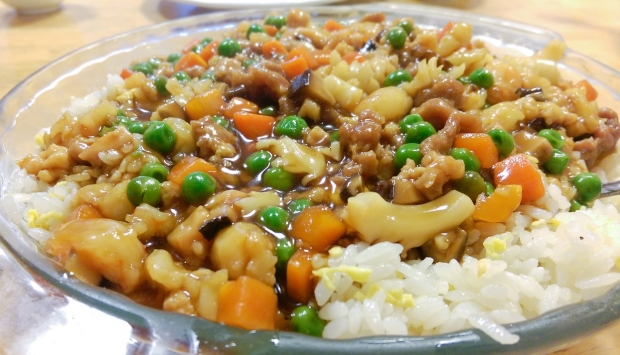
Image credit: sstrieu
The Hokkien version is a slight misnomer: the dish was originally created by the Taiwanese, albeit heavily influenced by the immigrants from the Fujian Province. Dried seafood and mushrooms among other ingredients come together in a lightly braised stew that is then poured over the wok fried rice. Try this if you are looking for a more textured, watery style of fried rice!
Szechuan Fried Rice
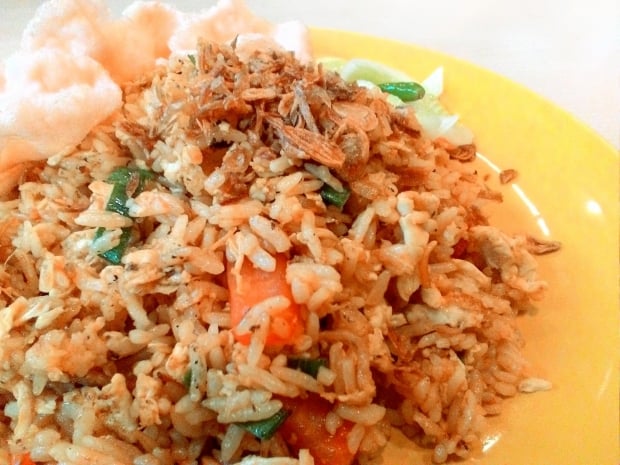
Image credit: Thamizhpparithi Maari
For lovers of all things hot and spicy, you might want to check out Szechuan’s spin! The stir-fried rice uses doubanjiang sauce, which is a salty, spicy paste made from fermented broad beans, salt, rice and other herbs and spices. Bursting with flavours of ginger, garlic, soya sauce, and the flaming hot red chili, the special and flavourful concoction is a favourite of the Szechuan people as an indispensable seasoning for them (akin to salt and pepper). Of course, for those who aren’t as inclined towards the spicy, the doubanjiang sauce can be made with much less potent chili peppers, but the dish will still retain most of its wow factor.
Cantonese Fried Rice
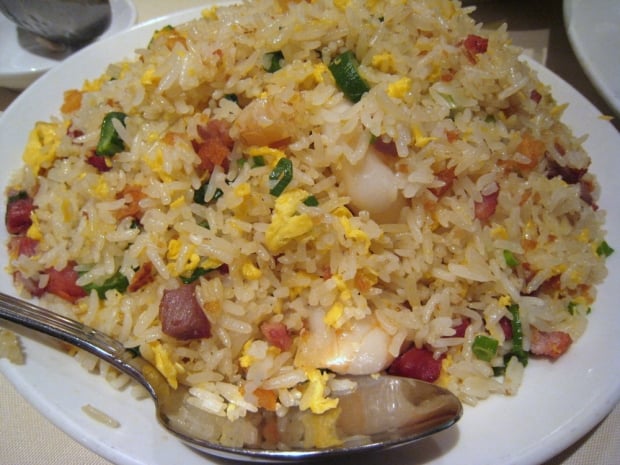
Image credit: Krista
The last member of the Chinese fried rice family, the Canton fried rice was born out of pragmatism, allowing households to recycle their leftovers into a simple to make yet extremely filling and satisfying meal. In fact, the key to making a good Cantonese fried rice dish is to use older, already cooked rice as it is drier, reducing the chances of a wet and mushy result. Typically served with a thick gravy poured over the fluffy rice, the meal is delicious and healthy, while avoiding the bloated feeling that comes after eating some rice dishes. It is versatile to boot, giving you the option to throw in your favourite toppings to perfectly suit your preferences!
Korea
Bokkeum-bap
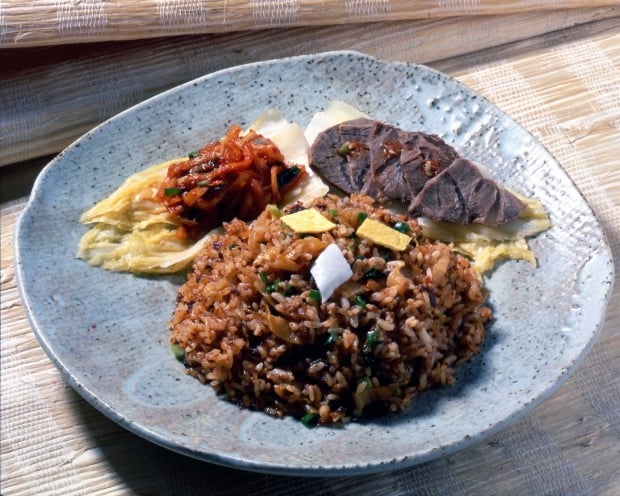
Image credit: Republic of Korea
Hailing from Korea, bokkeum-bap is a classic when all you have are odds and ends to throw together at the end of a long day. Essentially just stir-fried cooked rice with a whole range of ingredients depending on what’s at hand, bokkeum-bap is usually a end-of-meal add-on dish served in Korean restaurants. The phrase “bap bokka juseyo (please fry rice)” is the signal for cooked rice to be added into whatever is left of the main dishes, and then the whole thing is fried and scorched.
Kimchi Bokkeum-bap
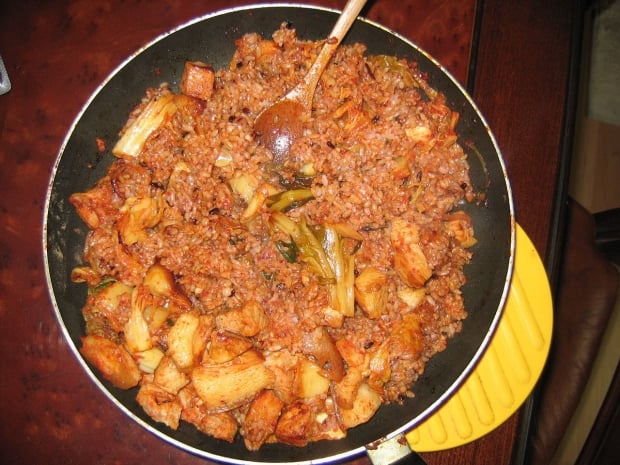
Image credit: Wikipedia
It would be a crime to leave out the national comfort food – Kimchi Bokkeum-bap. The spices and tangy vinegar combine with butter and sesame oil, a sprinkling of seaweed and the all-important sliced and fried Spam, embedded deep in the Korean culture as a warm, home-made stomach-filler.
Japan
Omurice
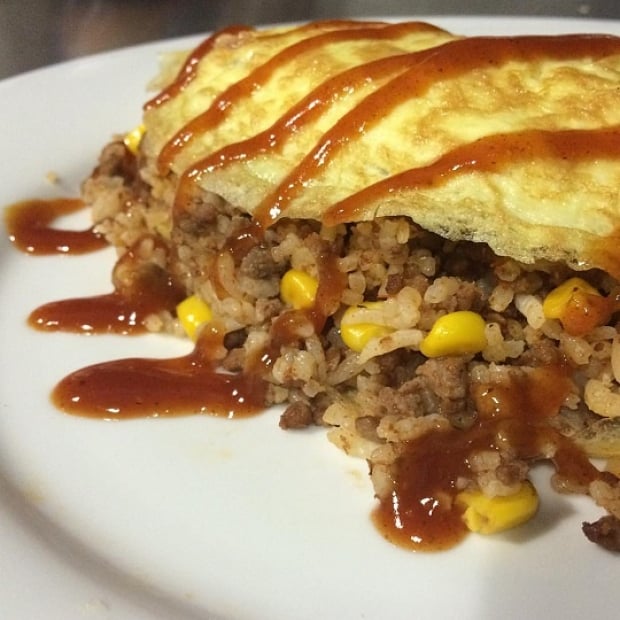
Image credit: Arnold Gatilao
Omurice should be well familiar to Japanese foodies! Steaming hot fried rice all wrapped up in a soft, jiggly omelette, it is a popular dish that is both enjoyed as a home cooked meal and served at diners. The softly cooked egg is usually topped off with a dressing of ketchup or mayonnaise, and the tomato-flavoured rice rounds up the sweetness of the dish. Quick to prepare and easy on the palette, omurice is right for anyone from kids to the young at heart!
Chahan
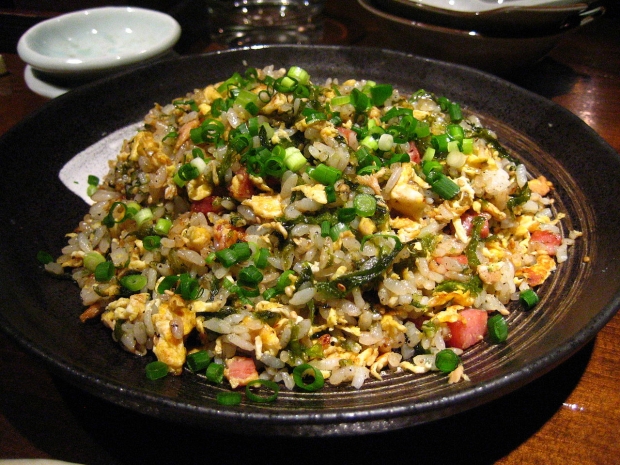
Image credit: ayustety
For those wanting fried rice with a more eastern influence, Chahan is of Chinese origins, thought to have come from Chinese immigrants arriving at the port of Kobe. A staple in Japanese households, one of the defining traits of chahan is the strong use of seafood in both the ingredients and seasoning, with diced crab meat, oyster sauce and octopus all being thrown into the sumptuous blend.
Indonesia/Malaysia/Singapore/Brunei
Nasi Goreng

Image credit: Yogas Design
I’d wager that this is the version that most of us living in Southeast Asia would be very well-acquainted with – after all, it’s readily found in a whopping 5 countries! While it might be stir-fried like quite a few of its counterparts on this list, its rich earthy and smoky aroma sets it apart. Cooked with sweet coconut milk and caramelised toasted cashew nuts, the rice is both creamy and crunchy at the same time. Complete the sensory overload with the salty, pungent, yet somehow satisfyingly layered and complex spicy shrimp paste, and the light zest of the coriander garnishing, and you have yourself one of the classic fares of the Malay Archipelago. In fact, this dish has even travelled all the way to the Netherlands, brought back by the colonials who were so fond of it they had to share it with their homeland!
Thailand
Khao Kluk Kapi
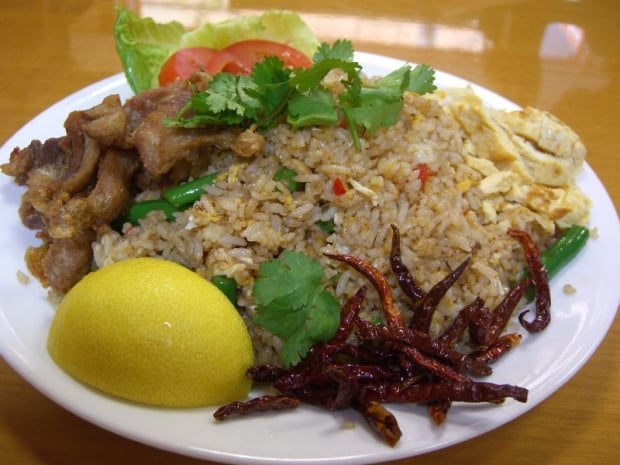
Image credit: alpha
If you are a lover of shrimp paste, you might be interested to try out Thailand’s spin on it. Khao kluk kapi (Thai Fried Rice with Shrimp Paste) has an aroma that hits you right in the face when you first try it, so go easy when you decide to smother that deliciously pungent shrimp paste all over the fried rice! The rice is the main star of the show, a half-bowl served right in the middle of the plate. Surrounding it are lovely sides including sweet and sour pork, freshly sliced cucumber and shallots, and shredded green mango or papaya. The sourness of the mango and papaya together with the refreshing cucumber form a very Thai infusion to excite your taste buds.
Khao Pat Amerikan
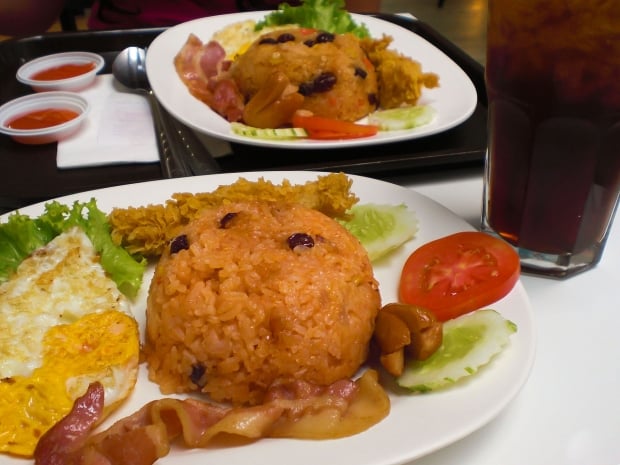
Image credit: Biyu Lau
Khao phat amerikan (American Thai Fried Rice) has intriguing roots. A true mashup of cultures, it brings together Chinese-styled fried rice with western breakfast ingredients like fried chicken, ham, and hot dogs. While the exact creator of the dish is disputed to be either a manager of an airport restaurant looking to use up leftover American breakfast ingredients or a Thai chef working hard to suit the tastes of stationed American troops during the Vietnam War, you can be sure to find yourself munching into a hearty breakfast either way.
If I Had to Pick…
Everyone has their preference with this much choice out there, but I would have to say I am partial to the humble omurice. Perhaps it is the fact that instead of bits and pieces of scrambled egg mixed into every spoonful, I can shovel a huge chunk of soft omelette into my mouth. Or maybe it’s the tangy taste of tomato that lingers in the mouth. In any case, omurice holds the top spot for me, but just by a really tight margin.
In any case, with all the different kinds of fried rice out there, you’ll never be tired of eating this seemingly simple and boring dish! Which is your favourite fried rice rendition?




